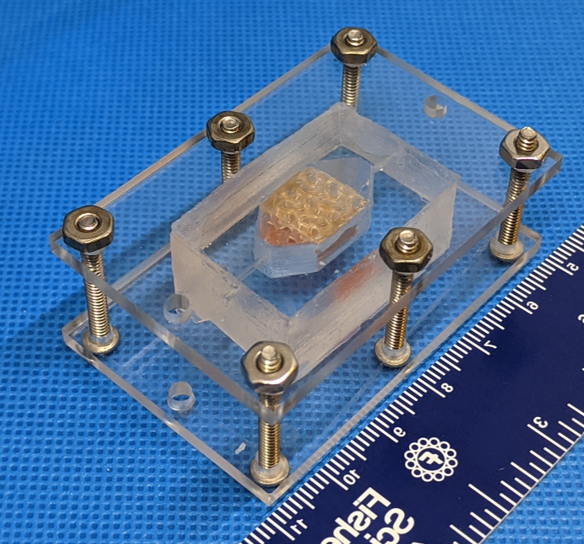NASA inches closer to printing artificial organs in space
In America, at least 17 people a day die waiting for an organ transplant. But instead of waiting for a donor to die, what if we could someday grow our own organs?
Last week, six years after NASA announced its Vascular Tissue Challenge, a competition designed to accelerate research that could someday lead to artificial organs, the agency named two winning teams. The challenge required teams to create thick, vascularized human organ tissue that could survive for 30 days.
The two teams, named Winston and WFIRM, both from the Wake Forest Institute for Regenerative Medicine, used different 3D-printing techniques to create lab-grown liver tissue that would satisfy all of NASA’s requirements and maintain their function.
“We did take two different approaches because when you look at tissues and vascularity, you look at the body doing two main things,” says Anthony Atala, team leader for WFIRM and director of the institute.
The two approaches differ in the way vascularization—how blood vessels form inside the body—is achieved. One used tubular structures and the other spongy tissue structures to help deliver cell nutrients and remove waste. According to Atala, the challenge represented a hallmark for bioengineering because the liver, the largest internal organ in the body, is one of the most complex tissues to replicate due to the high number of functions it performs.

WAKE FOREST INSTITUTE FOR REGENERATIVE MEDICINE
“When the competition came out six years ago, we knew we had been trying to solve this problem on our own,” says Atala.
Along with advancing the field of regenerative medicine and making it easier to create artificial organs for humans who need transplants, the project could someday help astronauts on future deep-space missions.
The concept of tissue engineering has been around for more than 20 years, says Laura Niklason, a professor of anesthesia and biomedical engineering at Yale, but the growing interest in space-based experimentation is starting to transform the field. “Especially as the world is now looking at private and commercial space travel, the biological impacts of low gravity are going to become more and more important, and this is a great tool for helping to understand that.”
But the winning teams must still overcome one of the biggest hurdles in tissue engineering: “Getting things to survive and maintain their function over an extended period is really challenging,” says Andrea O’Connor, head of biomedical engineering at the University of Melbourne, who calls this project, and others like it ambitious.
Equipped with a $300,000 cash prize, the first-place team—Winston—will soon have a chance to send its research to the International Space Station, where similar organ research has already taken place.
In 2019, astronaut Christina Koch activated the BioFabrication Facility (BFF), which was created by the Greenville, Indiana-based aerospace research company Techshot to print organic tissues in microgravity.
